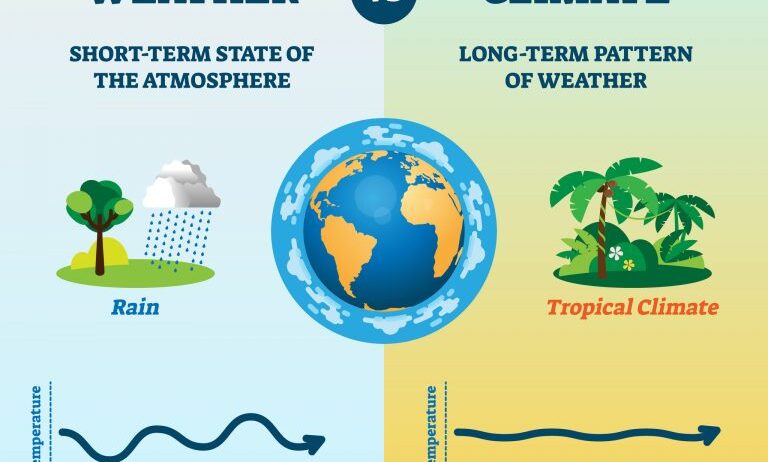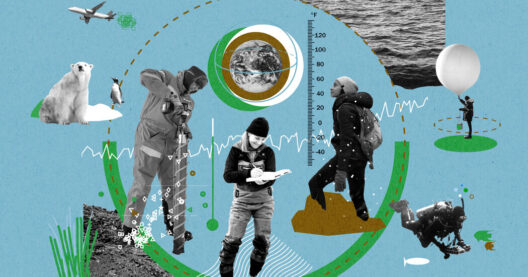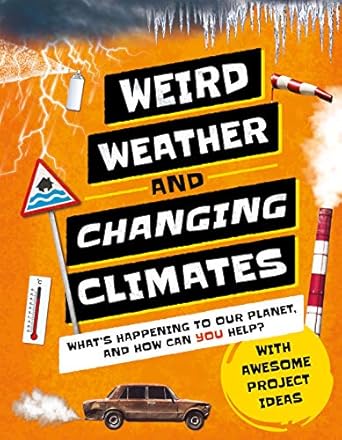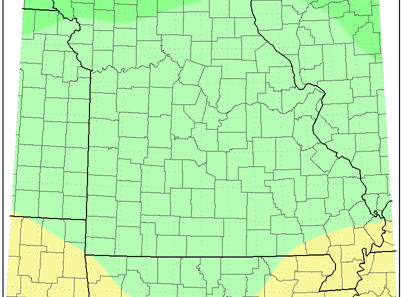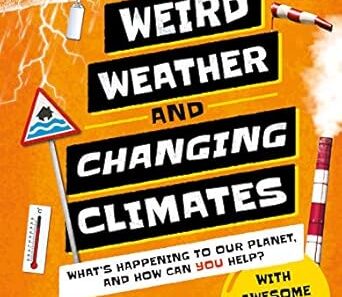Climate is a term frequently misinterpreted and often confused with weather. However, the distinction between the two is crucial in understanding our planet’s environmental health. Climate refers to the long-term patterns and averages of meteorological conditions in a specific area over extended periods, typically 30 years or more. It encompasses various elements, including temperature, humidity, precipitation, and atmospheric pressure, forming a comprehensive picture of what one can expect in a given region over time.
Weather, on the other hand, pertains to the short-term atmospheric conditions experienced at a specific place and time. It embodies the dynamic and transient phenomena such as snowfall, rain, thunderstorms, and sunny days. While weather can change dramatically from one hour to the next, climate paints a broader and more stable picture, representing the baseline against which we measure these variations.
Understanding climate necessitates a dive into the various components that craft this complex fabric of atmospheric behavior. The fundamental elements of climate include:
- Temperature: The average warmth or coolness of the atmosphere, typically measured in degrees Celsius or Fahrenheit.
- Precipitation: The total amount of moisture, in the form of rain, snow, sleet, or hail, that falls within a specified timeframe.
- Humidity: The concentration of water vapor present in the air, impacting comfort levels and weather phenomena.
- Wind Patterns: The movement of air masses across the globe can influence climate patterns extensively.
- Geographic Factors: Latitude, altitude, and proximity to water bodies contribute significantly to regional climate variations.
One critical aspect of studying climate is recognizing its classifications. Climate can be broadly categorized into several distinct types. These classifications are generally based on temperature and precipitation patterns. Among the most widely recognized are:
- Tropical Climate: Characterized by high temperatures and significant rainfall, found near the equator.
- Dry Climate: Exhibits low precipitation levels, resulting in arid and semi-arid regions.
- Temperate Climate: Experiences moderate temperatures and a distinct seasonal cycle.
- Continental Climate: Encompasses regions with more extreme temperature variations between seasons.
- Polar Climate: Found in the frigid northern and southern extremities, characterized by low temperatures and minimal precipitation.
Moreover, the study of climate extends beyond mere classification into the realm of climate change—a pressing global concern. Climate change refers to significant alterations in temperature, precipitation, wind patterns, and other climate-related variables across extended periods, often driven by anthropogenic activities. The burning of fossil fuels, deforestation, and industrial practices lead to increased concentrations of greenhouse gases in the atmosphere, which in turn alters global climate patterns.
The implications of climate change are far-reaching and multifaceted. Rising global temperatures generate a cascade of effects, including the melting of polar ice caps, rising sea levels, and altered ecosystems. The frequency and intensity of extreme weather events, such as hurricanes, droughts, and heatwaves, have escalated, threatening communities and biodiversity alike.
Increased understanding of climate mechanisms and changes fosters informed decision-making among policymakers and communities. Greenhouse gas emissions must be mitigated to combat climate change effectively. This requires adopting alternative energy sources, enhancing energy efficiency, and advocating for sustainable agricultural and Land-use practices..
Scientific research plays a pivotal role in elucidating the nuances of climate versus weather. Data collection through satellites, ocean buoys, and ground stations enables climatologists to examine variables over time. Notably, climate models, which simulate future climatic conditions based on various scenarios, provide insight into potential outcomes of different policy choices and human behaviors.
It is essential to appreciate the role of education in fostering a climate-conscious society. Readers can anticipate a variety of content addressing climate topics, including:
- Research Articles: In-depth scientific studies that explore specific aspects of climate and its changes.
- Policy Analyses: Evaluations of climate-related policies at local, national, and international levels, emphasizing efficacy and sustainability.
- Case Studies: Real-world examples showcasing both successful climate adaptation and mitigation measures.
- Community Initiatives: Features on grassroots movements empowering individuals and collectives to impact climate positively.
- Interviews with Experts: Insights from climatologists, ecologists, and policy makers sharing their knowledge and opinions on prevailing issues.
Moreover, the rise of social media has transformed the ways in which climate discourse takes place. Platforms allow for the rapid dissemination of information, mobilization of activism, and fostering of community among those concerned with climate issues. This engagement is critical for inspiring action and achieving a collective response against climate change.
In conclusion, distinguishing between climate and weather is not merely academic; it is a necessary step in addressing one of the defining challenges of our time. By assimilating knowledge on the multifaceted nature of climate and its implications, individuals, communities, and nations can navigate toward a sustainable future. Adopting an informed and proactive stance in preserving our planet’s climate is imperative—not just for current generations, but for those that will inhabit the Earth long after we have passed. Every small action counts in the grand tapestry of change, as we collectively strive for a healthier planet.


